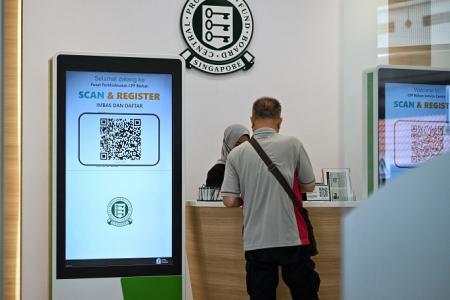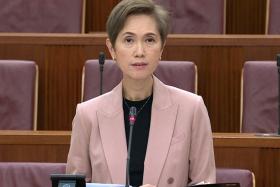CPF Special Account closure for older workers to start in Jan
The closure of the CPF Special Account (SA) for members aged 55 and above will take place from the second half of January 2025 onwards, after changes to the CPF Act were passed in Parliament on Oct 14.
The closure, which was debated extensively earlier in 2024 after it was announced in Budget 2024, will result in members’ SA savings being transferred to their Retirement Account (RA), up to the Full Retirement Sum (FRS) for their cohort. The remainder will be transferred to their Ordinary Account (OA).
Outlining the change during the debate on the CPF (Amendment) Bill on Oct 14, Manpower Minister Tan See Leng said CPF members will be notified when their SA is closed through a hard copy notification, as well as an e-mail or SMS where applicable.
He added that the principle behind closing the SA is to right-site CPF monies so that only CPF savings committed towards long-term retirement needs should earn the higher long-term interest rate, which is 4.14 per cent from Oct 1 to Dec 31, 2024, and at least 4 per cent from Jan 1 to Dec 31, 2025.
Members who have met the FRS will still be able to earn the higher long-term interest rate by voluntarily transferring their OA savings to the RA, he noted. It was previously announced that they can transfer up to the prevailing Enhanced Retirement Sum, which will be raised from three times to four times the Basic Retirement Sum from Jan 1, 2025.
Dr Tan said CPF members who want to retain the flexibility to withdraw their savings can also choose to leave the money in their OA and earn the lower OA interest rate of 2.5 per cent.
In response to Workers’ Party MP Jamus Lim (Sengkang GRC), who asked what happens to SA investments made under the CPF Investment Scheme, Dr Tan said that after their SA is closed, members can continue to hold their investments until they sell them, or until the investments mature.
Upon sale or maturity, the proceeds will go to their RA up to the FRS, and any remaining balance will go to their OA.
As part of other changes to the CPF Act, about 100 more CPF members each year will be able to benefit from public insurance that pays up their Housing Board flat loan in the event of their death, terminal illness or total permanent disability.
The Home Protection Scheme (HPS), which protects members and their loved ones from losing their Housing Board flats, will be expanded from mid-2025 to include those with certain pre-existing conditions that are not so severe, such as certain types of stroke and heart disorders.
They will need to pay higher premiums but the HPS would provide coverage at one of the lowest premiums that such members would pay in the current market, said Dr Tan.
He also responded to questions from Members of Parliament Yip Hon Weng (Yio Chu Kang) and Louis Ng (Nee Soon GRC), and Nominated MPs Jean See and Neil Parekh, who asked for clarity on the types of conditions covered and the number of CPF members who will benefit from expanded coverage.
The 100 members represent a fraction of the 1.3 per cent or 1,400 CPF members who are currently rejected annually for coverage under HPS due to pre-existing health conditions.
They will be allowed to opt-in to the HPS, which means they can choose to participate if they want to, as opposed to being forced to take part.
The remaining CPF members with more severe health conditions, such as those currently receiving cancer treatment, will not be able to participate in the scheme, Dr Tan said, adding this ensures “the HPS remains sustainable and affordable for the majority of members” and is in line with industry practice.
The vast majority of CPF members are eligible for coverage today, he noted. They include some members who have pre-existing conditions but are assessed to be generally in good health.
For instance, these individuals could have fully recovered from a stroke for some time, or they could have early-stage cancer and remained in remission for a period of time.
They will continue to pay the same standard premiums and will not be affected by the higher rates.
Taken together, the expansion of HPS coverage to more members and the closure of the SA are part of the evolution of the CPF system to better serve the needs of Singaporeans over the course of their lives, Dr Tan noted.
The CPF Act will also be amended to prioritise the recovery of public housing subsidies when Plus and Prime flats are sold under the new flat classification framework.
These flats come with additional subsidies so upon their sale, the HDB will be able to recover a percentage of the resale price or market valuation of the flat, whichever is higher.
This will be done before the amount of CPF savings used in the purchase of the property, including accrued interest, is returned to the member’s CPF account.
HDB informs flat buyers of the subsidy recovery rate upfront at the point of launch of that project, and the recovery rate remains fixed at the point of resale, regardless of whether the flat was eventually sold at a profit or loss compared with the original launch price, Dr Tan said.
The subsidy recovery maintains parity with Standard flat buyers who did not receive additional subsidies, and is important to ensure a fair system of subsidies for all flat buyers, he added.
Get The New Paper on your phone with the free TNP app. Download from the Apple App Store or Google Play Store now


